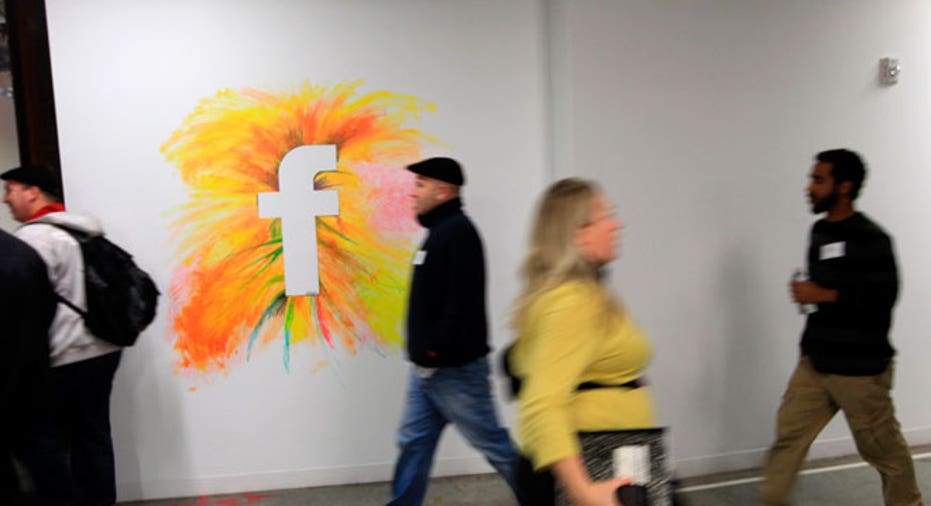The Facebook Effect: Instagram to Inspire New Digital Ad Age

It’s only been a few days since Facebook (NASDAQ:FB) unveiled video on Instagram and already brands are taking to the service, underscoring the potential value it could have for the world’s largest social network as advertisers take to mobile cinema.
Menlo Park, Calif.-based Facebook’s presence in the video market signals an inevitable evolution of the way brands reach their customers. Already the second most popular place to watch video on the web, it may help inspire a new digital ad age.
“There’s no digital channel today that has the reach and audience that TV does,” said Spruce Media CEO Rob Jewell. "But when Facebook makes its play in video advertising, that’s ultimately what it will bring to the market."
Among the brands already taking advantage of the Vine-like service are Burberry, which posted a 15-second video shortly after the service was unveiled on Thursday that gave a behind the scenes glimpse of its menswear spring/summer 2014 show, Lululemon, which published a Lulu-wearing woman doing yoga throughout Vancouver, and Jeep, which shot a video from the passenger side of a Jeep Wrangler as a woman and her friends went for a ride.
Gap (NYSE:GPS), eBay (NASDAQ:EBAY), Cisco (NASDAQ:CSCO) and General Electric (NYSE:GE) are also among the most active, as are sports-related brands like the Dodgers, Yankees, NBA and ESPN.
“The move over to video is pretty much inevitable,” said Brian Kotlyar, director of marketing at Dachis Group, a provider of social marketing solutions. “This is a powerful way for brands to express themselves in the future.”
The Facebook Effect
While Facebook is far from the first to utilize social video, its adoption as the world’s most dominant social media presence catapults video advertising to a new level.
“They’ll have the potential to reach an audience much larger than the Super Bowl's every day of the year.”
Facebook was the second most popular place to watch videos in May behind Google’s (NASDAQ:GOOG) YouTube, according to recent data from comScore. Total video ad views reached 15.8 billion in May, with social media advertisers BrightRoll, Google and LiveRail leading the market in terms of ad impressions.
Brands that choose to post promotional content on Instagram will have automatic access to 130 million existing users on a platform that sees more than one billion “likes” daily and has seen a collective 16 billion photo uploads over its lifetime.
Instagram boasted five million uploads in the first 24 hours the video service was available, tantamount to more than a year's worth of back-to-back video.
“They’ll have the potential to reach an audience much larger than the Super Bowl's every day of the year,” Jewell said.
The Power of User-Generated Video
It’s a natural evolution of an ages-old advertising model. By making ads more targeted, more personal and more emotionally-engaging through videos, brands will be able to more easily, and in many cases more subtly, showcase their products and brand to fans and potential customers.
“As the marketing landscape becomes more cluttered, there’s an increasing need to create emotional bonds,” said Reid Genauer, chief marketing officer of Magisto, an app that uses artificial intelligence to create theme-based professional-level personal videos up to three minutes long.
Magisto, which has been around since January 2011 and has seen its user base double to eight million in the last four months, said it sees a "tremendous opportunity for video advertising." It has already secured four partnerships with brands using its app to drive engagement, including with sports apparel retailer Rawlings, which will soon launch a video competition through the Magisto platform in celebration of little league.
“What’s so powerful about this is it is sort of authentic, native advertising. Being able to have a dialogue on the back of user generated video is powerful,” Genauer said.
While companies like Jeep, Burberry, Lululemon and Gap that have established themselves among the social media elite will likely see the easiest and fastest transition to video, other less developed brands will follow as Facebook and other apps make it easier to shoot, edit and upload videos. They'll have to adapt in order to keep up with their customers.
“Brands are as challenged of making high quality video at scale as most people are because it costs a fortune to do professional video editing,” Genauer said. “As long as [video editing tools] are easy to use and yielding good results, the adoption curve will shorten.”
Quietly Building an Empire
UBS (NYSE:UBS) analyst Eric Sheridan projects video ads will begin showing up through Instagram later this year with seven-figure potential. Other brokerages have also expressed bullishness in Facebook's ability to monetize video.
“What Facebook has been known to do is sit back and quietly build this massive empire of inventory then one day launch some very creative and interesting ad units that all of a sudden become a must buy for advertisers,” Jewell said. “Once they get around to launching video ads, it will be a huge revenue source for them.”
It’s anyone’s guess how Facebook will do it, but the most likely scenario will be allowing advertisers to buy video slots and either promote or sponsor them so they appear in people’s feeds, something the social network already does with text ads.
Sheridan raised his fiscal 2013 revenue target on Facebook by $120 million to $6.75 billion on Thursday.
“When Facebook went public, it didn’t even have mobile ads. One year later it counts for about a third of its revenue,” Jewell said. “The user base is clearly there and demand from advertisers is there, so I think you’ll see the same thing with video.”



















